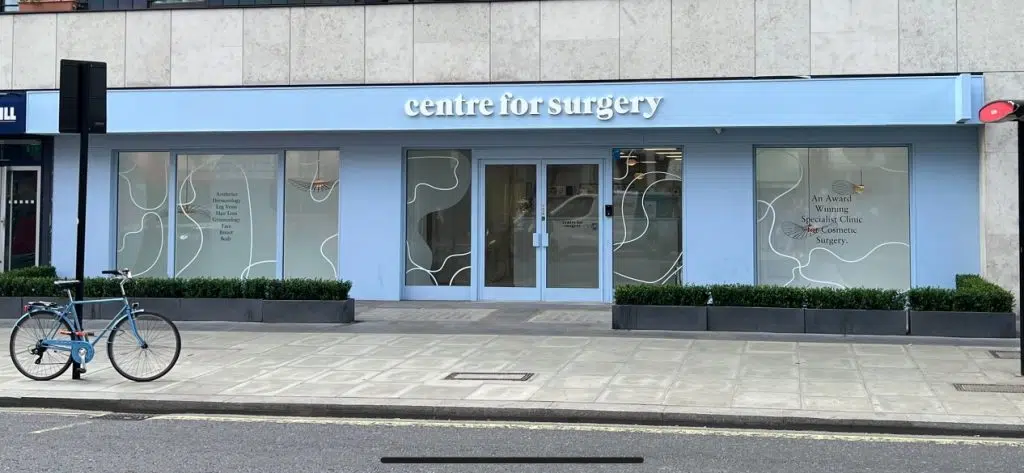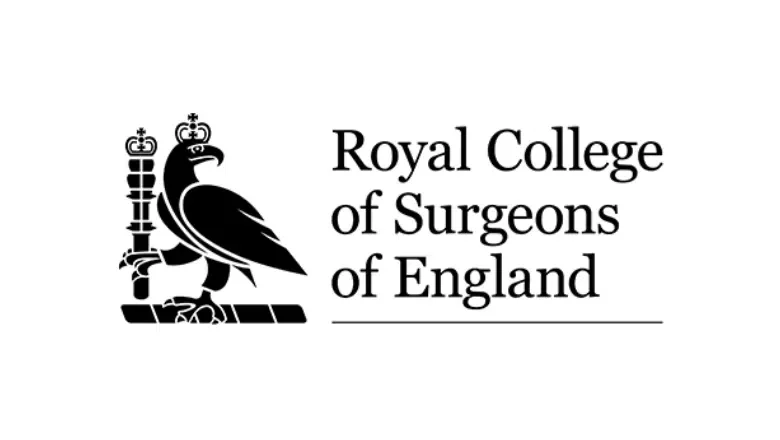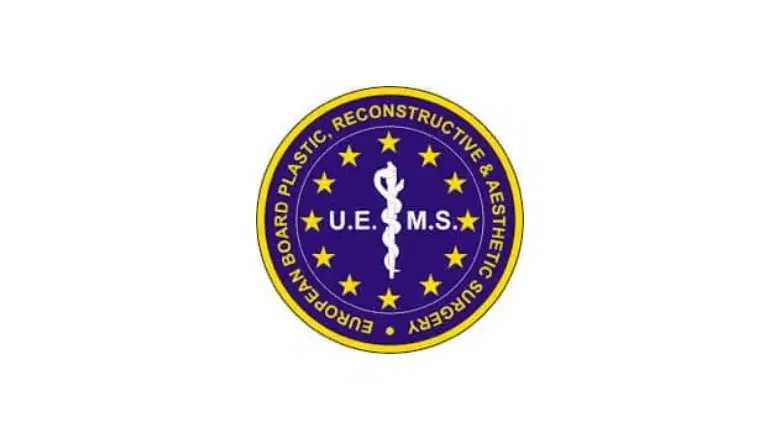Buttock Lift Surgery: London & UK
Experience a youthful, firmer, and more appealing silhouette with our buttock lift surgery, expertly designed to reshape and elevate your buttocks for an attractive, confidence-boosting transformation
Buttock Lift Surgery, also referred to as Gluteal Lift or Gluteoplasty, is an innovative surgical procedure aimed at addressing the issue of sagging skin and redundant fat accumulations in the buttock region. This cosmetic intervention aims to deliver a more elevated, well-defined, and firmer appearance to the buttocks.
RELATED: Sagging Butt – Causes and Solutions
Often, after significant weight loss – whether through bariatric surgery, diet, or rigorous exercise – the skin around the buttocks can become stretched and appear saggy. This is due to the skin’s elasticity being tested beyond its limit during the weight gain period, leading to subsequent droopiness when the weight is lost. This could cause cosmetic distress to individuals, making them opt for surgical procedures to correct their appearance.
During a buttock lift surgery, the surgeon meticulously removes superfluous skin and fat to meticulously sculpt the buttocks. The reshaped buttocks are then reconstructed, resulting in a more streamlined and aesthetically satisfying silhouette.
RELATED: Excess Skin Removal Surgery
The procedure is commonly included in a comprehensive body lift operation, particularly for patients who’ve experienced massive weight loss. To further enhance the rejuvenation of the lower body, it can be combined with an outer thigh lift. This comprehensive procedure ensures a harmonious improvement in the appearance of the buttocks, thighs, and lower back. In cases of extreme skin laxity due to considerable weight loss, the procedure can also be paired with an abdominoplasty or tummy tuck as part of a holistic body lift approach.
Furthermore, liposuction might be employed to strategically extract excessive fat deposits. This method serves to refine the profound changes brought about by the surgical elimination of stretched skin, providing a more polished and pleasing look.
At Centre for Surgery, our surgeons are proficient in a diverse array of buttock lift techniques. They are dedicated to delivering optimal outcomes that will leave the body feeling and appearing rejuvenated. The choice of the appropriate method depends on the degree of skin laxity present in an individual. Different types of buttock lifts employ different incision patterns, with some being more conspicuous than others.
RELATED: Post Weight Loss Surgery
It’s important to differentiate a Buttock Lift from a Brazilian Butt Lift. The latter procedure aims to augment the size of the buttocks by transferring fat, while concurrently contouring the waistline. Conversely, a surgical buttock lift often leads to a reduction in buttock volume as part of the process of excising excess skin and fat. Rest assured, at the Centre for Surgery, our surgeons are skilled in performing the safest techniques for gluteal fat transfer surgery, aligning with their commitment to patient safety and satisfaction.
What is Buttock Lift Surgery?
Buttock Lift Surgery, also known as Gluteal Lift, is a medical procedure designed to improve the appearance of the buttocks, specifically by addressing the issue of excess, sagging skin. This surgical operation aims to enhance the overall contour, shape, and aesthetics of the buttocks, thus helping individuals regain confidence in their body image.
The process of ageing, significant fluctuations in weight, heredity factors, and even lifestyle can lead to the development of loose, excess skin around the buttock area. This lack of firmness and elasticity can become a source of insecurity for many people, leading them to seek solutions to restore a more youthful and toned appearance to this region of the body.
In comes Buttock Lift Surgery, a cosmetic procedure that aims to counter these effects. The essence of this operation lies in the removal of surplus skin and, in certain cases, underlying fat. The primary goal of this procedure is not necessarily to augment the size of the buttocks (as a Brazilian Butt Lift would), but rather to tighten and lift sagging skin, thereby enhancing the natural contours of the body.
RELATED: Big Butt Surgery – Should I get BBL or Implants?
The surgery usually begins with the administration of anesthesia to ensure patient comfort throughout the procedure. Then, the surgeon makes strategic incisions, typically hidden within the natural folds of the skin, to avoid conspicuous scarring post-surgery. Through these incisions, excess skin is carefully excised, and, if necessary, underlying fat deposits are repositioned or removed to further improve the overall shape and firmness of the buttocks.
Postoperative care is crucial in achieving optimal results from a Buttock Lift Surgery. Patients are often advised to follow a specific care routine, including wearing a special compression garment to support the newly shaped buttocks and promote healing, managing pain and discomfort with prescribed medication, and observing appropriate hygiene measures to prevent infection.
Benefits of Buttock Lift Surgery
Buttock Lift Surgery offers many benefits, contributing to its growing popularity in cosmetic surgery. Here are some of the critical advantages that individuals can gain from undergoing this procedure:
Improved Appearance
The primary benefit of a buttock lift is an enhanced physical appearance. This procedure can provide a firmer, more youthful-looking contour to the buttock area by removing excess skin and fat. As a result, individuals can enjoy a rejuvenated and more appealing silhouette.
Boosted Self-Confidence
Along with physical improvements, the surgery can also significantly improve one’s self-esteem and body image. Individuals often report an increase in confidence following the procedure, which can positively affect their social, professional, and personal lives.
Better Fit of Clothing
Clothing tends to fit better as the buttocks become more proportionate and toned. This can make shopping for clothes more enjoyable and broaden wardrobe options, as certain styles and fits may feel more comfortable and look more flattering after surgery.
Lasting Results
While no surgery can permanently halt the effects of ageing or weight fluctuation, the results of a buttock lift tend to be long-lasting, especially when combined with a healthy lifestyle. Maintaining a stable weight and practising regular exercise can further prolong the results.
Correction after Significant Weight Loss
For individuals who have lost a large amount of weight, a buttock lift can provide a much-needed final touch to their transformation. After weight loss, the skin often can’t retract fully, leading to sagging and drooping. This procedure effectively addresses these issues, helping to complete the individual’s weight loss journey.
Combination with Other Procedures
A buttock lift can be combined with other cosmetic procedures for a more comprehensive body contouring strategy. This includes procedures such as liposuction, tummy tucks, and thigh lifts. This holistic approach can lead to more balanced and harmonious results.
Safety and Effectiveness
While any surgical procedure carries some degree of risk, a buttock lift performed by a qualified and experienced surgeon can be considered a safe and effective way to improve the buttocks’ appearance. Surgeons today use advanced techniques that minimise risks and promote quicker recovery.
Ideal Candidates for Buttock Lift After Massive Weight Loss
The decision to undergo any surgical procedure should be made thoughtfully, and Buttock Lift Surgery is no exception. While it can offer significant benefits, not everyone is a suitable candidate for the procedure. The ideal candidates for Buttock Lift Surgery typically share several common characteristics:
Good Health
Candidates should be in good overall health. This means they should not have any serious medical conditions that could potentially complicate the surgery or recovery process. Conditions like heart disease, diabetes, or an impaired immune system could increase the risk of complications during surgery.
Stable Weight
The best candidates for a buttock lift are those who have achieved and maintained a stable weight for at least six months. This is especially important for individuals who have undergone significant weight loss. If further weight loss is expected, it’s usually advisable to wait until after the weight has stabilized before undergoing the procedure.
Non-smoker
Smoking interferes with the healing process by constricting blood vessels and decreasing blood flow to the tissues. It also increases the risk of complications during surgery. Therefore, ideal candidates for any kind of surgery, including a buttock lift, are non-smokers or those who are willing to quit smoking well in advance of the procedure and during the recovery period.
Realistic Expectations
Although a buttock lift can significantly improve the appearance of the buttocks, candidates should have realistic expectations about the results. The procedure can help tighten and lift sagging skin, but it is not designed to add volume to the buttocks or eliminate cellulite completely.
Excess Skin
Ideal candidates for a buttock lift are those who have a significant amount of loose or sagging skin in the buttock area. This is often a result of ageing, significant weight loss, or genetic factors.
Psychological Stability
Emotional and mental preparedness is crucial for any surgery. Therefore, ideal candidates should be psychologically stable and prepared for the temporary limitations in activity and changes to their bodies that come with surgery and recovery.
Commitment to a Healthy Lifestyle
Ideal candidates are those committed to maintaining a healthy lifestyle after the surgery. This includes a balanced diet and regular exercise to maintain the results of the procedure.
Types of Buttock Lift
Buttock Lift, also known as Gluteoplasty, can be performed using various techniques, each of which is tailored to address the individual’s specific needs and desired outcomes. Here are some of the primary types of buttock lift surgery:
Traditional Buttock Lift
This procedure primarily focuses on removing excess skin and fat from the upper part of the buttocks. It is most suitable for individuals dealing with sagging skin due to ageing or significant weight loss. The surgery involves making an incision across the top of the buttocks, followed by removal of excess skin, and possibly fat, to achieve a firmer and more toned appearance.
Buttock Lift with Liposuction
In this approach, liposuction is utilised in conjunction with a traditional buttock lift to remove excess fat deposits. This can create a more contoured and shapely buttock. This procedure is ideal for individuals who not only have excess skin but also excess fat in the buttock area.
Brazilian Butt Lift (BBL)
Unlike the traditional lift, the Brazilian Butt Lift involves a fat transfer procedure to augment the size and shape of the buttocks. Fat is first harvested from other areas of the body using liposuction (often from the abdomen, thighs, or hips), purified, and then injected into the buttocks. This procedure enhances the overall proportions of the body by simultaneously reducing fat in undesired areas and adding volume to the buttocks.
Buttock Lift with Implants
In some cases, individuals may lack sufficient fat for a Brazilian Butt Lift. In such situations, a buttock lift with implants may be the preferred option. Here, solid silicone implants are inserted into the buttocks through incisions made in the natural creases between the buttocks. This procedure provides a significant increase in volume and is typically opted for by those looking for a dramatic transformation.
RELATED: Butt Implant Removal
Lower Body Lift
A lower body lift, also known as Belt Lipectomy, involves a buttock lift in combination with other procedures like a thigh lift and abdominoplasty (tummy tuck). This comprehensive approach addresses loose, sagging skin and fat around the entire lower body, leading to a more balanced and harmonious overall appearance.
Buttock Lift with Thigh Lift
A buttock lift is combined with a thigh lift to create a more cohesive appearance between the two areas. This is often desired by individuals who have loose skin in both the buttock and thigh regions, particularly after significant weight loss.
Buttock Lift Surgical Techniques
Buttock Lift Surgery, as performed at the Centre for Surgery, is a highly personalised procedure carried out under TIVA general anaesthesia and typically completed within a duration of 2-3 hours. The primary goal of this procedure is to reshape the buttock region, lending it a more youthful, firm, and appealing appearance. Being a day case surgery, patients have the advantage of recuperating within the familiar and comfortable confines of their homes. This factor has been associated with superior outcomes compared to traditional inpatient surgery.
This surgical intervention can vary in invasiveness, ranging from a minimally invasive procedure to correct localized skin laxity to a comprehensive approach combining liposuction and excision techniques for significant skin laxity. The integration of liposuction enables surgeons to meticulously contour the region by targeting and eliminating excess fat deposits in the buttocks, hips, and lower back. Supplementary liposuction also facilitates the subsequent removal of loose skin, reducing the risk of blood loss. For enhancing the volume of the buttocks, surgeons may opt for an auto-augmentation technique, which involves surgically repositioning the extracted fat.
There are different types of buttock lift skin removal procedures that can be performed, each suited to specific needs and conditions and the location of the excess skin:
Traditional Full Buttock Lift
This method offers the most comprehensive rejuvenation of the buttocks, hips, and lower back. The procedure involves making an incision along the upper border of the buttocks, surgically removing the redundant underlying tissue, and repositioning the remaining tissue to restore a youthful contour. Despite the resultant scar along the top of the buttocks, this technique proves extremely effective in addressing skin laxity, especially in patients who have experienced massive weight loss.
Mini Buttock Lift
This procedure may be apt for individuals with a moderate degree of skin laxity. The surgical incision is placed in the lower part of the buttocks on each side, within the natural fold. The excess tissue from the lower buttock area is surgically removed. Given that the incision is well-hidden within the lower buttock fold, this technique is often preferred by those concerned about visible scarring.
Modified Buttock Lift
This method differs from the traditional approach due to the butterfly-like curvature of the skin incision, which begins from the central part of the upper buttock and extends upwards and laterally. This technique is optimal for individuals with predominantly excess skin and thin underlying skin-tissue flaps. However, for patients with thicker skin flaps, this procedure may not yield optimal results.
Lateral Buttock Lift
Suitable for those with moderate buttock sagging, primarily concentrated on the outer part of the buttocks, this technique is especially beneficial for slimmer patients with moderate fat excess who prefer shorter, less conspicuous scars compared to a traditional buttock lift.
Notably, buttock lift surgery can be performed concurrently with other cosmetic procedures, such as liposuction and abdominoplasty (tummy tuck), for fat removal and weight reduction. These combined procedures can significantly contribute to rejuvenating your overall appearance by addressing excess skin and fat deposits.
Recovery After Buttock Lift
Recovery following a buttock lift is a gradual process and requires both patience and diligent care. Here’s a general outline of what to expect during the recovery phase after a buttock lift procedure:
Immediate Post-Operative Period
Immediately following surgery, it’s normal to experience some swelling, bruising, and discomfort in the treated area. You may also have surgical drains in place to help remove fluid that accumulates after surgery. These are typically removed within a week or two. To manage pain, your surgeon will prescribe appropriate pain medication. It’s recommended to avoid sitting directly on your buttocks when possible to avoid pressure on the treated area and to help promote healing.
First Few Weeks
During the first few weeks after surgery, you will need to wear a special compression garment, which helps to minimize swelling and supports the healing tissues. You should avoid strenuous activities and heavy lifting during this period to prevent any complications. Maintain a healthy diet to support your recovery and to refrain from smoking, as it can interfere with the healing process. Light walking is encouraged to promote blood circulation.
One to Two Months Post-Op
By this time, most of the swelling and bruising should have subsided, and you will start to see the new shape of your buttocks. However, complete healing and the final result may not be visible until several months after the procedure. During this period, you should gradually resume your regular activities, as advised by your surgeon. Regular exercise can typically be resumed about 6-8 weeks post-surgery, but always follow your surgeon’s specific instructions.
Long-term Recovery
Even after you’ve fully recovered, it’s important to maintain a stable weight and healthy lifestyle to maintain the results of your buttock lift. Significant weight fluctuations can affect the outcome and lead to additional sagging and changes in the appearance of your buttocks.
Remember that everyone heals at their own pace, so your recovery timeline may differ from someone else’s. Always follow your surgeon’s post-operative instructions closely and attend all follow-up appointments to ensure a smooth and successful recovery. You should promptly report any unusual symptoms or concerns to our experienced support team at Centre for Surgery.
Risks & Complications of Buttock Lift Surgery
Buttock lift surgery, like all surgical interventions, carries certain inherent risks despite its general safety. The common post-operative effects include:
Bruising and Swelling
These are typical side effects after any surgical procedure. They are temporary and tend to subside as the body heals.
Temporary Numbness
Patients may experience a lack of sensation or numbness in the treated area. This is often temporary and resolves as the nerves recover from the surgery.
Scarring
A degree of scarring is inevitable with any surgical procedure. However, surgeons strive to place incisions strategically to minimise visible scarring.
In rare instances, some patients may encounter more serious complications, which include:
Nausea
This is often a side effect of anaesthesia and should pass once the anaesthesia wears off.
Bleeding or Infection
Potential risks exist with any surgical procedure. Surgeons take numerous precautions to minimise these risks, and any signs of bleeding or infection are addressed promptly.
Poor Healing of Incisions and Scarring
Some people might have a genetic predisposition to heal poorly or develop hypertrophic or keloid scars. Proper post-operative care can help minimize these risks.
Seroma
This is a condition where fluid accumulates under the skin at the surgical site. If this occurs, it may require further treatment to drain the fluid.
Haematoma
This is a blood collection underneath the skin that might require additional procedures to remove.
Fat Necrosis or Embolism
These are rare but serious complications. Fat necrosis involves the death of fat cells, which can cause firmness or discomfort, whereas fat embolism involves fat entering the bloodstream and potentially blocking blood vessels.
During your consultation, your surgeon will thoroughly explain these potential risks and complications. They will also discuss their likelihood, how they can be minimised, and how any that may occur would be managed. This comprehensive discussion aims to ensure you make a well-informed decision about undergoing the procedure.
Enhancing Your Figure with Combined Buttock Enhancement Procedures
Achieving a harmoniously contoured figure often involves more than a single procedure. Among the most popular enhancements is the transformation of the buttocks area, which can be beautifully achieved through a strategic combination of procedures tailored to each individual’s unique body shape and aesthetic goals. This guide delves into the nuanced approach of combining a buttock lift with either fat transfer or liposuction, illustrating how these procedures work in concert to sculpt a more lifted, voluminous, and shapely posterior.
Buttock Lift with Fat Transfer
Commonly referred to as a Brazilian Butt Lift (BBL), fat transfer to the buttocks is a procedure that not only volumizes but also elevates the buttocks, creating a more youthful and aesthetically pleasing contour. Our skilled surgeons excel in performing this dual procedure, which begins with the careful removal of sagging skin to tone the lower body area. This is seamlessly followed by the strategic injection of excess fat harvested from other body parts into the buttocks. The removal of loose skin through a buttock lift addresses skin laxity, while the addition of fat enhances volume, resulting in a beautifully rounded and elevated buttock profile.
By carefully selecting and repositioning the patient’s own fat, we ensure a harmonious augmentation that not only enhances the buttocks but also contributes to a more balanced and attractive body silhouette.
Buttock Lift Combined with Liposuction
For many individuals, the journey to a more sculpted body involves the removal of stubborn fat deposits that remain unresponsive to diet and exercise. Liposuction targets these specific areas, effectively eliminating unwanted fat and sculpting a more desirable shape. When focusing on the buttocks, liposuction can dramatically enhance the contour by removing excess fat from strategic locations such as the lower back, hips, and upper thighs, thus framing the buttocks for a more pronounced and appealing appearance.
However, removing fat can sometimes lead to excess skin, which may detract from the smooth, tightened appearance desired by many patients. This is where the combination of liposuction with a buttock lift proves invaluable. Following the reduction of fat through liposuction, a buttock lift is performed to address any resultant skin laxity. This additional step ensures the skin around the newly sculpted buttocks is firm and smooth, perfectly showcasing the enhanced shape achieved through liposuction.
Furthermore, for those seeking an even more defined silhouette, we offer high-definition liposuction. This advanced technique goes beyond traditional liposuction by meticulously sculpting around the buttocks to highlight and accentuate the natural curves, delivering an exceptionally defined and aesthetically pleasing result.
Buttock Lift at Centre for Surgery
Choosing Centre for Surgery for your buttock lift procedure offers several advantages:
Highly Skilled Surgeons
Our surgeons are experts in buttock lift procedures, each having performed numerous successful surgeries. They continually update their techniques and knowledge to provide you with the highest standard of care.
Tailored Approach
We understand that every patient has unique needs and goals. Our surgeons will develop a personalised treatment plan that aligns with your body type, aesthetic goals, and lifestyle.
State-of-the-art Facilities
Centre for Surgery utilises the most advanced technology and surgical techniques at our Baker Street clinic. Our facilities are designed to ensure your comfort and safety throughout your journey with us.
Patient Safety
Patient safety is our utmost priority. All of our procedures are carried out in accordance with the highest safety standards, and we’re dedicated to offering transparent and honest advice, helping you make informed decisions.
Comprehensive Care
We believe in a holistic approach to patient care. From your first consultation to your post-operative check-ups, our team will guide you and provide information and support.
Transparent Pricing
Following your consultation, we provide clear and upfront pricing so you know exactly what the procedure will cost. We also offer various financing options to help make the procedure more affordable.
Postoperative Support
We provide extensive post-operative care to ensure a smooth recovery. If any questions or concerns arise after the surgery, you’ll have direct access to us 24/7.
Proven Track Record
We take pride in our patients’ positive testimonials and high satisfaction rates.
At Centre for Surgery, we’re committed to making your journey as comfortable and fulfilling as possible. We look forward to partnering with you on this transformative journey.
FAQs
-
What causes saggy buttocks?Several factors can contribute to the development of saggy buttocks, some of which include:
Aging: As we age, our skin loses elasticity and muscle tone due to a decrease in collagen and elastin production. This can lead to a sagging appearance in various body parts, including the buttocks.
Weight fluctuations: Rapid weight gain or weight loss can cause the skin to stretch and contract. If these changes in weight are significant or frequent, the skin may not be able to return to its initial form, resulting in saggy skin.
Lack of exercise: Regular exercise, especially strength and resistance training, helps to maintain muscle tone and prevent sagging. If the muscles in the buttocks (gluteal muscles) are not regularly exercised, they can lose tone and cause the buttocks to sag.
Poor nutrition: A diet lacking in essential nutrients and vitamins can negatively affect skin health and elasticity, leading to sagging.
Genetics: Your genes can play a significant role in the elasticity and overall quality of your skin. Some people are genetically predisposed to have less elastic skin, which can lead to sagging over time.
Gravity: Over the years, the continual downward pull of gravity can cause skin and underlying tissues to droop.
Pregnancy: The weight gain and hormonal changes during pregnancy can stretch the skin, and it may not fully retract back, causing sagging.
Sun exposure: Overexposure to the sun can damage the skin and decrease its elasticity, leading to sagging over time. -
Who Should Consider a Buttock Lift?A buttock lift is most suitable for individuals in good health who wish to eliminate sagging skin around their buttocks for a firmer, more defined appearance. Ideal candidates are those who are close to their ideal weight, non-smokers, and those without serious underlying health conditions that might impair healing or increase surgical risks. If you have a body mass index (BMI) over 30, or if smoking is a habit, you may need to address these factors before being considered a good candidate for surgery. A detailed consultation with your surgeon will help determine if a buttock lift is appropriate for you, taking into account your health, lifestyle, and aesthetic goals.
-
What are the causes of skin laxity in the buttock region?Skin laxity or loose skin in the buttock region can be due to a number of causes including:
- Patients who undergone massive weight loss
- The ageing process
- Genetic factors with a higher predisposition to developing loose skin -
Who will carry out my buttock lift procedure?Buttock lift surgery along with other body contouring procedures are performed by specialist plastic surgeons at Centre for Surgery.
Our surgeons undergo a rigorous appointments process to ensure they have the skills and experience to carry out buttock lift surgery. -
How should I prepare for buttock lift surgery?outcome and a smooth recovery. Here are some general guidelines on how to prepare for this procedure:
Medical Evaluation: Your surgeon may request a full medical evaluation or specific tests to ensure you are healthy enough for the surgery. This can include blood tests, a physical examination, or even consulting with a specialist if you have any pre-existing medical conditions.
Medications: Some medications and supplements can interfere with healing or increase the risk of bleeding during surgery. Your surgeon may ask you to stop taking certain medications or adjust your dosages in the weeks leading up to your procedure.
Smoking: Smoking can significantly impair your body's ability to heal. Most surgeons recommend that patients quit smoking at least six weeks before surgery to reduce the risk of complications.
Alcohol: Excessive alcohol can interfere with your recovery. Limit your alcohol intake in the weeks leading up to surgery.
Diet and Exercise: Maintaining a healthy diet and regular exercise routine can improve your overall health and enhance your body's ability to recover after surgery. It is also important to stay hydrated.
Prepare your home: Since you'll need to rest and recover post-surgery, preparing your home ahead of time can make things easier. This can include preparing meals in advance, setting up a comfortable space where you can relax and sleep, and ensuring that you have easy access to everything you might need, such as medications, water, phone, etc.
Arrange for help: Arrange for a family member or friend to drive you home after the surgery and stay with you for at least the first night. You may need help with basic tasks as you begin your recovery.
Follow pre-operative instructions: Your surgeon will provide detailed instructions for the day of your surgery. This could include information on what to eat or drink, what to wear, and when to arrive at the hospital or surgery center. It's important to follow these instructions closely.
Mental preparation: It's normal to feel anxious before surgery. Take time to relax, practice stress-reducing techniques such as meditation or deep breathing exercises, and make sure to discuss any concerns with your doctor. -
How long does buttock lift take to carry out?Buttock lift surgery takes roughly two hours to carry out but may take longer if it is also combined with liposuction.
-
Does a Buttock Lift Involve Fat Removal?Yes, part of the buttock lift procedure can involve the removal of excess fat to better contour and define the shape of the buttocks. This is typically achieved through liposuction, targeting stubborn fat pockets that don't respond well to diet and exercise alone. By sculpting around the buttocks, surgeons can create a more aesthetically pleasing shape, enhancing the overall appearance of the buttocks and lower body.
-
When will I start to results from my buttock lift?The outcome of a buttock lift procedure becomes evident progressively in the aftermath of the surgery. Initial results might be discernable in the days following the operation, but it's typically around the six-week mark when the changes become more obvious. The transformation continues for approximately a year post-surgery, during which the treated area continues to heal, and the skin adjusts to the new contour.
Nonetheless, it's crucial to note that the results, although long-lasting, might not be permanent in the literal sense. This is mainly due to the natural aging process that affects skin elasticity over time, leading to increased looseness or sagging. Post-surgery, this aging process resumes from a more favorable point, owing to the enhanced skin firmness and uplifted contour achieved through the surgery. Consequently, it may take many years for noticeable sagging to reappear.
However, with advancing age, it's normal to see some degree of sagging reoccur, especially if significant weight gain occurs. This is because increased body weight stretches the skin, causing it to lose some of its firmness.
Maintaining a stable body weight is essential for preserving the results of a buttock lift surgery. Significant weight fluctuations can stretch the skin, leading to excess sagging that may necessitate further surgical intervention. Hence, a balanced diet and regular exercise are recommended to maintain consistent body weight.
It's also worth noting the adverse impact of smoking on the longevity of surgery results. Smoking is known to expedite the aging process and can potentially reduce the lasting effects of the procedure. Therefore, it's strongly advised to quit smoking to prolong the beneficial outcome of your buttock lift surgery. -
Is a Buttock Lift a Permanent Solution?A buttock lift aims to remove excess skin and fat from the buttock area, enhancing its tone and definition. While the removal of skin and fat is permanent, the long-lasting nature of the results depends significantly on maintaining a stable weight and healthy lifestyle post-surgery. Weight fluctuations can alter the outcome, and as the natural ageing process takes its toll, skin elasticity decreases, potentially leading to some laxity returning over time. It's important to have realistic expectations and understand that while the effects are enduring, they are not entirely immune to the influences of ageing and lifestyle changes.
-
Is buttock lift a painful procedure?Your surgeon will inject local anaesthetic during the procedure and this helps to minimise any post-operative discomfort. Any discomfort you may experience after the surgery is mild and short lived and easily controlled with oral prescription painkillers given to you by your surgeon. The majority of patients do not require any painkillers after 72 hours after their procedure.
-
Is buttock lift a safe procedure?Buttock lift is a commonly performed procedure for patients who have developed skin laxity often as a result of weight loss. The procedure has potential risks but these are rare and your surgeon is trained to manage any complications were they to occur. At your consultation your surgeon will explain all the potential risks associated with buttock surgery.
-
Is the period following a buttock lift treatment characterized by any downtime?After undergoing a buttock lift procedure, you should anticipate a certain degree of downtime, during which rest and recovery are paramount. It is a period when the body needs to heal from the surgical intervention, and routine activities may need to be restricted or limited. This recuperation period can vary among patients based on individual healing capabilities, the extent of the surgical procedure, and overall health. Generally, you should prepare to take at least two weeks off work or daily activities to ensure adequate rest and recovery.
-
Is the use of a compression garment necessary after undergoing buttock lift surgery?In the aftermath of a buttock lift surgery, wearing a compression garment is typically recommended and, in some cases, mandatory. This garment aids in controlling post-surgical swelling, helps the skin adapt to its new contours, and supports the healing tissues. Depending on your surgeon's advice, the compression garment usually needs to be worn for several weeks following the surgery. It's essential to wear it as instructed to optimise the healing process and improve the final outcome of your procedure.
-
What other surgical procedures can be concurrently performed with a buttock lift?A buttock lift procedure can be combined with other cosmetic surgeries to enhance overall body contouring results. Common procedures that patients often choose to undergo in conjunction with a buttock lift include abdominoplasty (tummy tuck), liposuction, thigh lift, or even a breast lift. The combination of procedures essentially depends on the patient's goals, overall health, and the surgeon's professional advice.
-
Are there circumstances when a buttock lift should be avoided?Certain conditions may deem a buttock lift inappropriate or risky. Patients planning significant weight loss should postpone this procedure, as substantial weight fluctuations post-surgery can affect the results negatively. Women planning future pregnancies might also want to delay the surgery since pregnancy can stretch the skin and muscles, altering the outcome of the surgery. Furthermore, individuals with serious health conditions that could impede healing or increase surgical risks may not be suitable candidates.
-
When Can I Sit After Undergoing a Buttock Lift?After a buttock lift, sitting for extended periods is discouraged for at least the first two weeks post-surgery to avoid putting undue pressure on the healing tissues and affecting the outcome. When you do need to sit, using a cushion or pillow to elevate your buttocks will help distribute your weight more evenly and reduce strain on the surgical area. Your surgeon will provide specific guidelines based on your individual surgery and recovery process, ensuring optimal healing and results.
-
When can I recommence sports activities and exercise after a buttock lift?The timeline for returning to sports activities and exercises varies among individuals and depends on the complexity of the procedure and the rate of recovery. Generally, light physical activity such as walking can be resumed soon after surgery to promote blood circulation. However, strenuous activities, heavy lifting, and high-impact exercises should be avoided for about six to eight weeks post-surgery, or until your surgeon gives you clearance to resume them.
-
What type of scarring can I anticipate following a buttock lift?As with any surgical procedure, a buttock lift will result in some degree of scarring. The extent and location of scars depend on the specific type of lift performed and the individual's healing process. Surgeons typically make an effort to place incisions in natural body folds or areas that can be concealed by underwear or swimwear. Over time, with proper care, these scars typically fade and become less noticeable. Your surgeon will provide you with post-operative care instructions to optimise the healing and appearance of your scars.
-
Is Undergoing a Buttock Lift Worth It?For many patients, the buttock is a key area of focus when seeking to improve their body's contour and appearance. A buttock lift can significantly enhance the shape, tone, and youthfulness of the buttocks, making it a highly valued procedure for individuals looking to achieve a more sculpted and lifted posterior. It is particularly beneficial for those wishing to address sagging and lack of definition without necessarily increasing volume. The decision to undergo a buttock lift should be made after careful consideration of your aesthetic goals, lifestyle, and consultation with a skilled surgeon to ensure it aligns with your expectations and achieves the desired outcome, often leading to enhanced self-confidence and satisfaction with your body's appearance.












